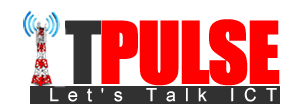By Cyril Ilayah
Nigeria is presently at an elevated risk of not meeting its targeted 30 present broadband penetration by the end of 2018.
This is the verdict of a NigeriaCom report titled ‘Charting A Path To Fulfil Nigeria’s Broadband Potential;A Return To Growth,’ which was unveiled in preparation of its annual NigeriaCom event holding later this month in Lagos.
The NigeriaCom’s verdict is hinged on the fact that 4G spectrum allocation remains inadequate, due to a slower-than expected process in awarding more 2.6GHz and 700MHz spectrum, along with a relatively inefficient use of the 800 MHz band.
The report noted that despite the steady recovery of the Nigeria’s economy with Information and Communications Technology (ICT) sector performance indicators turning positive, the industry continues to be beset by persistent challenges that are hampering its ability to truly fulfil its potential.
Excluding MTN Nigeria, terrestrial fibre rollout growth has been flat, averaging around 400 km a year between 2014 and 2017, and falling to less than 200 km a year since the Nigerian economic crisis intensified in 2016
These challenges, according to the report are the Fibre deployment, which has essentially slowed to a crawl, owing to issues around rights-of-way and the slow rollout of licensed fibre infracos providers.
“Despite a slow recovery, sector capital expenditure levels remain low, as most players either lack the capital to spend, or remain highly cautious in the face of uncertainty. In turn, Nigeria is now at an elevated risk of not achieving the 30 percent broadband penetration objective for 2018, as set in its National Broadband Plan,” the report stressed.
Nigeria appears to be falling behind, even regressing in a number of key areas, Mobile broadband, for example, is a key area of concern. Between 2010 and 2012, Nigeria had one of the highest levels of broadband penetration in Africa
The report added that the 22 percent target reported by the Nigerian Communications Commission to have been met is a misnomer, saying 22 percent should be for mobile Interent penetration, which is not the making of any regulatory prowess, but a revolution that took pace across the world.
In addition, the report noted that the economy recovers, Nigeria’s perennial telecoms market challenges are starting to impact overall market standing, and Nigeria’s performance relative to its African peers. “Nigeria appears to be falling behind, even regressing in a number of key areas, Mobile broadband, for example, is a key area of concern. Between 2010 and 2012, Nigeria had one of the highest levels of broadband penetration in Africa. From 2013, other markets grew faster, a pattern that accentuated during 2015-17, as Nigerian broadband penetration growth slowed. A leader in the 3G era, Nigeria has been somewhat of a laggard on 4G. As of mid 2018, for example, Nigeria 4G coverage was one of the lowest among a number of key African mobile markets, trailing South Africa, Kenya or Ghana,” it emphasized.
In the area of financial inclusion and fibre rollout, the report also expressed concerns. Quoting data from the World Bank’s Global Findex, a tracker of financial inclusion worldwide, Nigeria’s rate of financial inclusion declined to around 40 percent in 2017, from 44 per cent in 2014.
The verdict is hinged on the fact that 4G spectrum allocation remains inadequate, due to a slower-than expected process in awarding more 2.6GHz and 700MHz spectrum, along with a relatively inefficient use of the 800 MHz band
Unlike many other African markets, Nigeria does not allow mobile operators to directly offer mobile money and other financial services. In turn, Nigeria’s bank-led framework has hindered digital financial services growth and is challenging the country’s ability to hit an established target of 80% financial inclusion by 2020.
Fibre rollout is also being held back, with a direct impact on the pace of 4G coverage and Nigeria’s readiness for 5G. Data from the Xalam Africa Terrestrial Fibre Dashboards indicates that Nigeria has the second largest fibre installed base in Sub-Saharan Africa, only behind South Africa. Nonetheless, more than 60percent of Nigerian fibre is dedicated to mobile operator self-provisioning, creating a considerable scarcity of metro and interurban fibre capacity.
In effect, not enough open access terrestrial fibre is being built in Nigeria, owing to a range of issues ranging from high right of way costs to multiple taxation. Excluding MTN Nigeria, terrestrial fibre rollout growth has been flat, averaging around 400 km a year between 2014 and 2017, and falling to less than 200 km a year since the Nigerian economic crisis intensified in 2016. Of the 25 Sub-Saharan African markets tracked in the Xalam Africa Terrestrial Fibre Dashboards, 16 have built more open access terrestrial fibre than Nigeria over the past five years.



